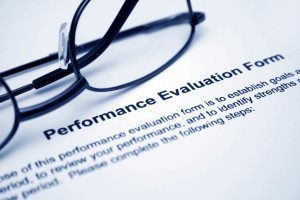Performance Evaluation
 Performance evaluation conversations are just one element of effective performance management. The overall goal of performance management is to ensure that the organization and all of its subsystems (processes, departments, teams, employees, etc.) are working together in a way that efficiently contributes to achievement of the organization’s goals.This reminds us that being busy is not the same as producing results. Good performance evaluation redirects efforts away from busyness toward effectiveness.
Performance evaluation conversations are just one element of effective performance management. The overall goal of performance management is to ensure that the organization and all of its subsystems (processes, departments, teams, employees, etc.) are working together in a way that efficiently contributes to achievement of the organization’s goals.This reminds us that being busy is not the same as producing results. Good performance evaluation redirects efforts away from busyness toward effectiveness.
Achieving good performance involves several ongoing activities:
- Identifying and prioritizing desired results
- Setting standards and clear goals
- Measuring progress
- Providing regular feedback
- Reinforcing activities that achieve desired results
- Intervening to redirect activities that are off-track
Performance Evaluation: Conducting Effective Reviews
In an ideal world, all annual performance evaluation conversations would positively impact the performance, motivation and commitment of the employee and create perfect alignment between their efforts and the needs of the organization. However, the annual performance evaluation conversation has the potential to create completely the opposite outcome, with the employee hurt, demoralized, angry and determined from that point forward to do the bare minimum of work to get by without getting fired. Most reviews achieve a result that is somewhere between these two extremes. This guide is intended to provide some practical tips on how to conduct review conversations that are more likely to resemble the first scenario than the second.
Purpose of Performance Evaluation
The purpose of annual performance evaluation is to gather and analyze information on which to base
- Recognition of efforts and achievements
- Expectations of future performance
- Identification of development needs
- Guidance on career growth options
- Decisions about contract renewal, DSIs, promotions
- Reevaluation of job functions
Some of the information will come from the supervisor’s first hand observations of the employee’s work. Other information will come from the outputs the employee generates. More information could come from secondary sources, such as others with whom the employee interacts in the course of their work. Last, and by no means least, important information comes in the form of the employee’s thoughts and opinions on their own performance.
Performance Evaluation Outcomes
An annual performance evaluation conversation needs to generate three outcomes:
- A fair performance appraisal rating for the past year based on objective evidence
- A clear performance program for the coming year that is tightly aligned to the wider departmental and organizational objectives and agreed by both supervisor and employee
- Enhanced levels or reinforcement of existing high levels of employee commitment, motivation and confidence that they can perform well
